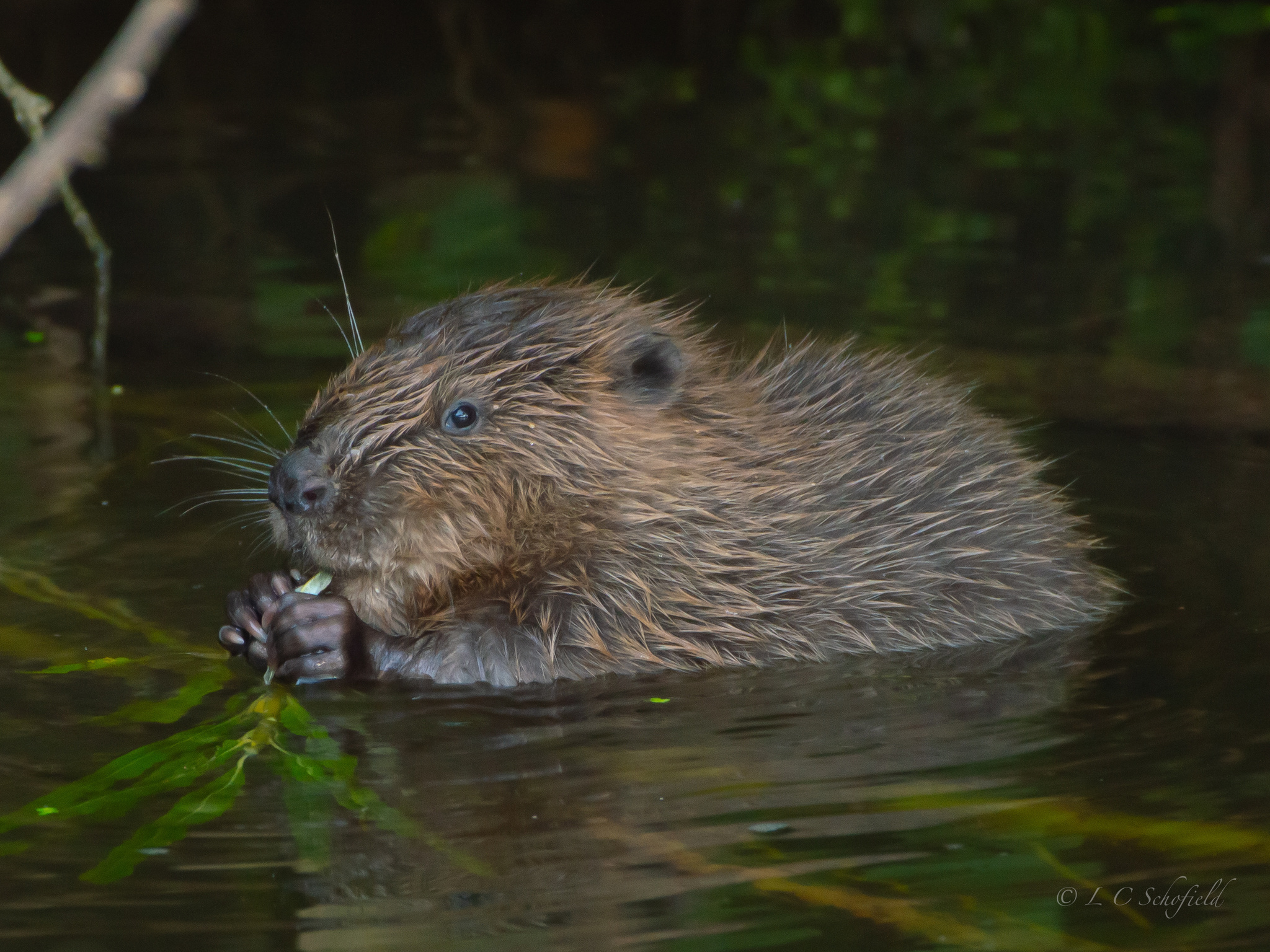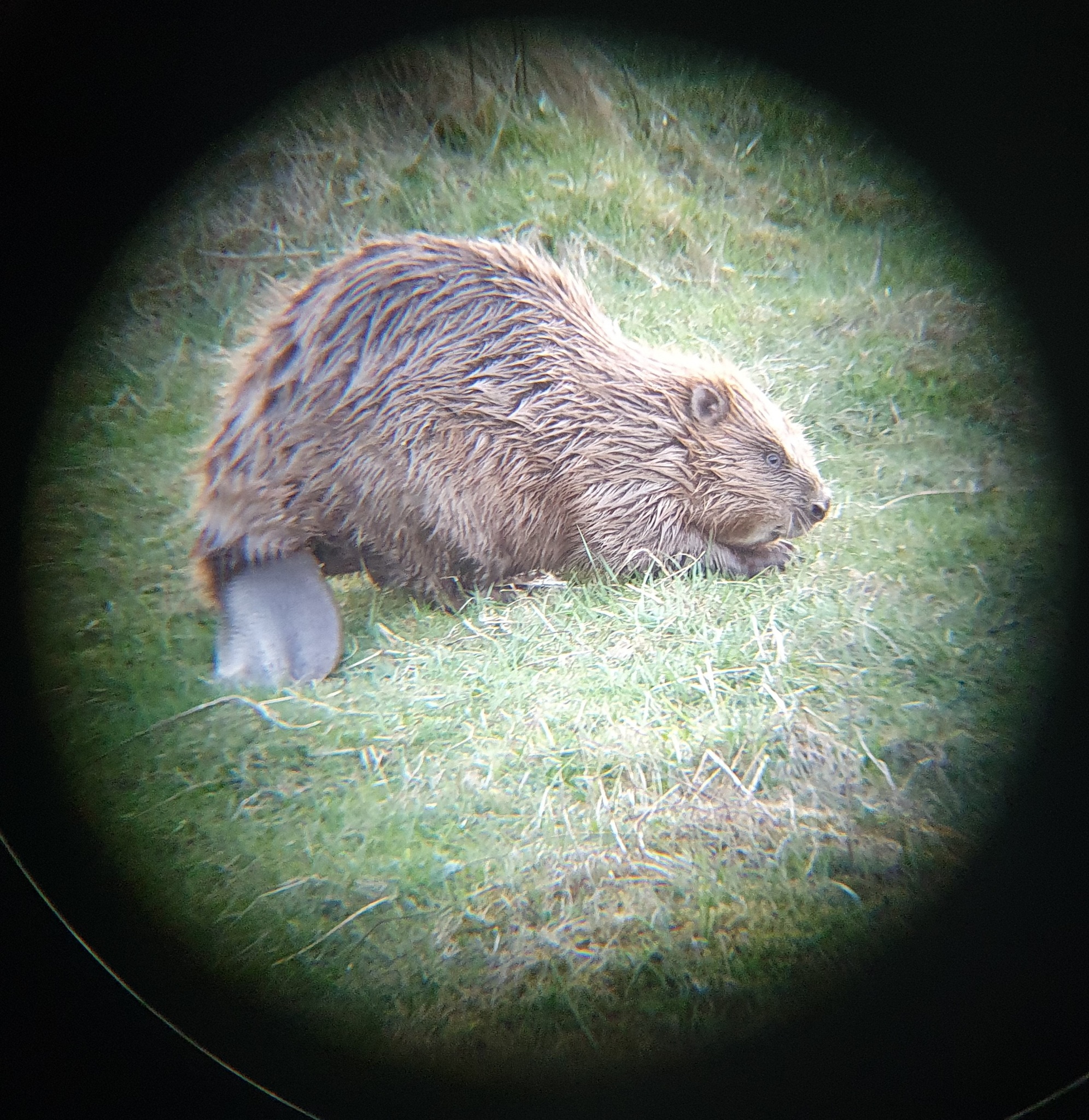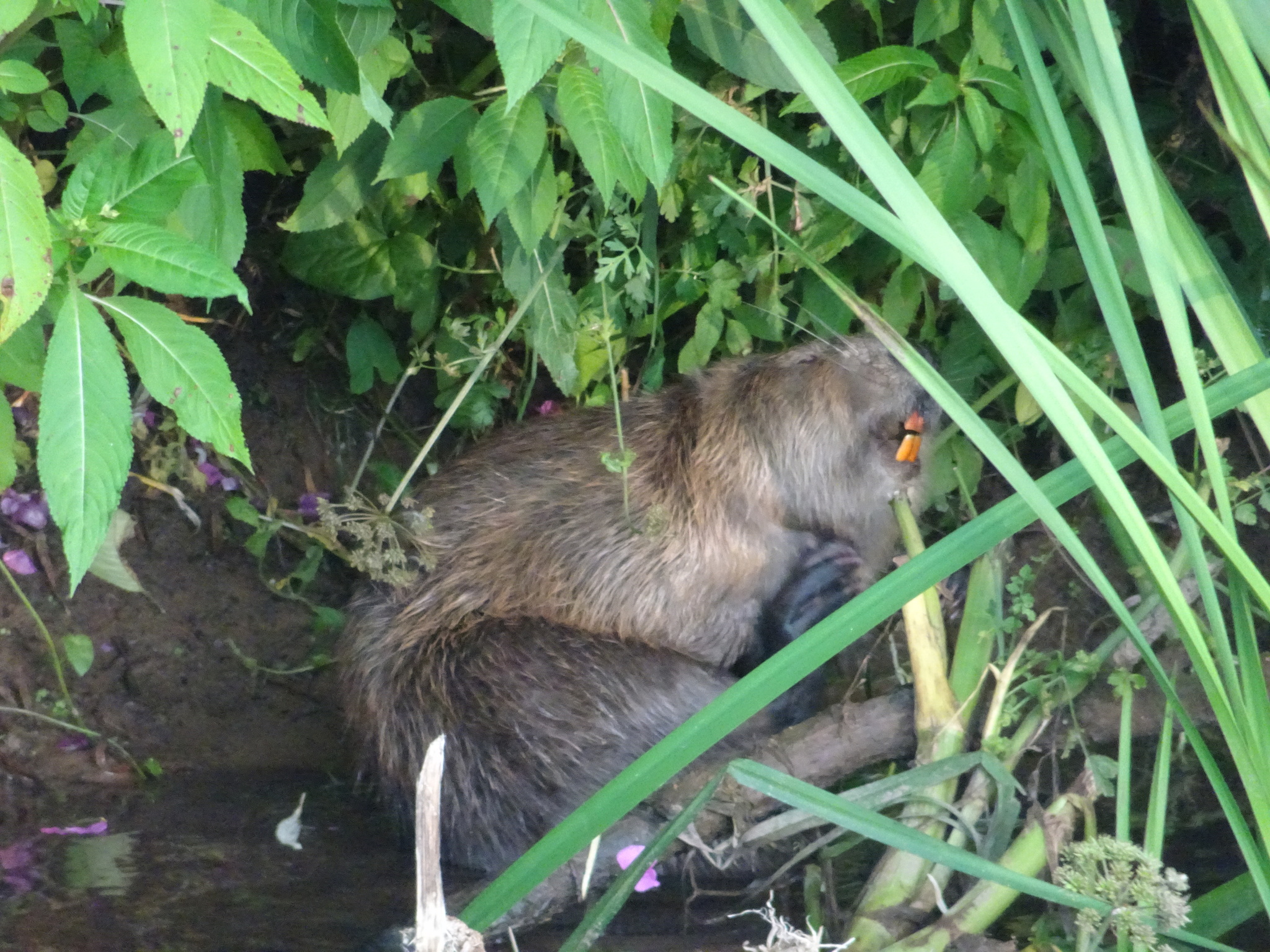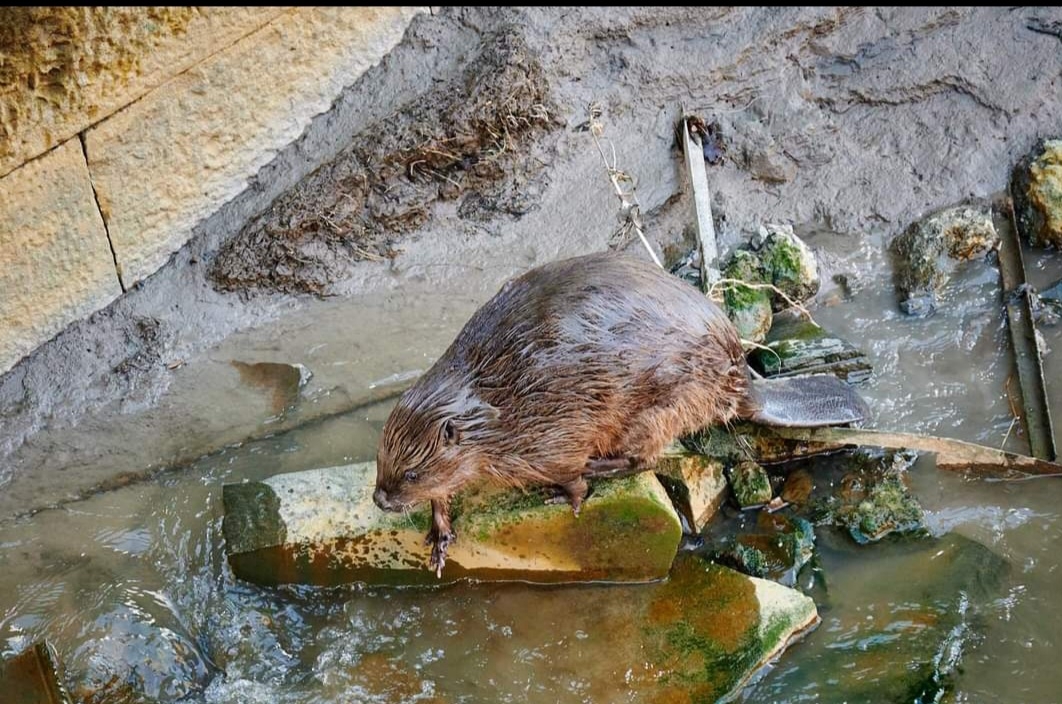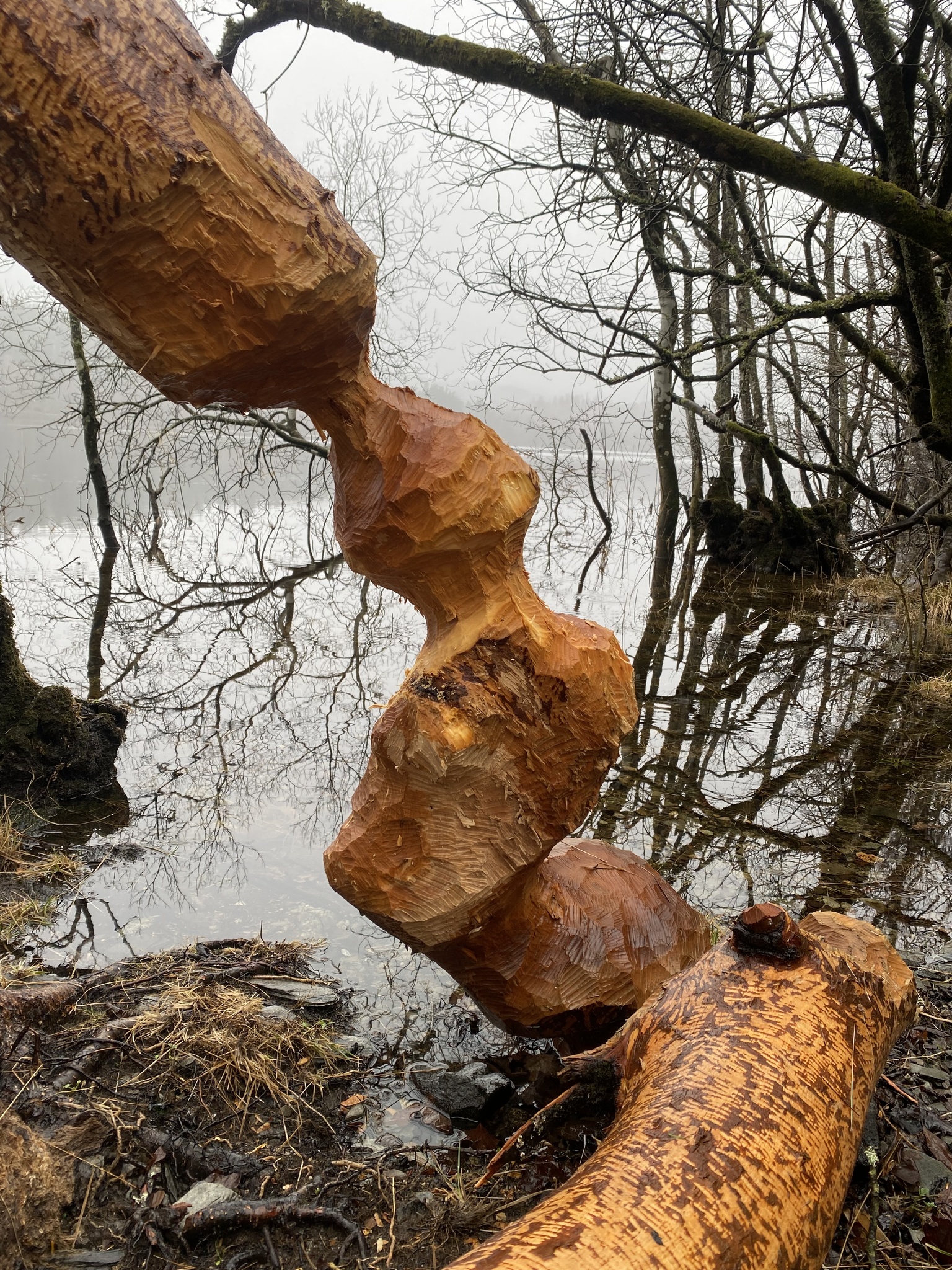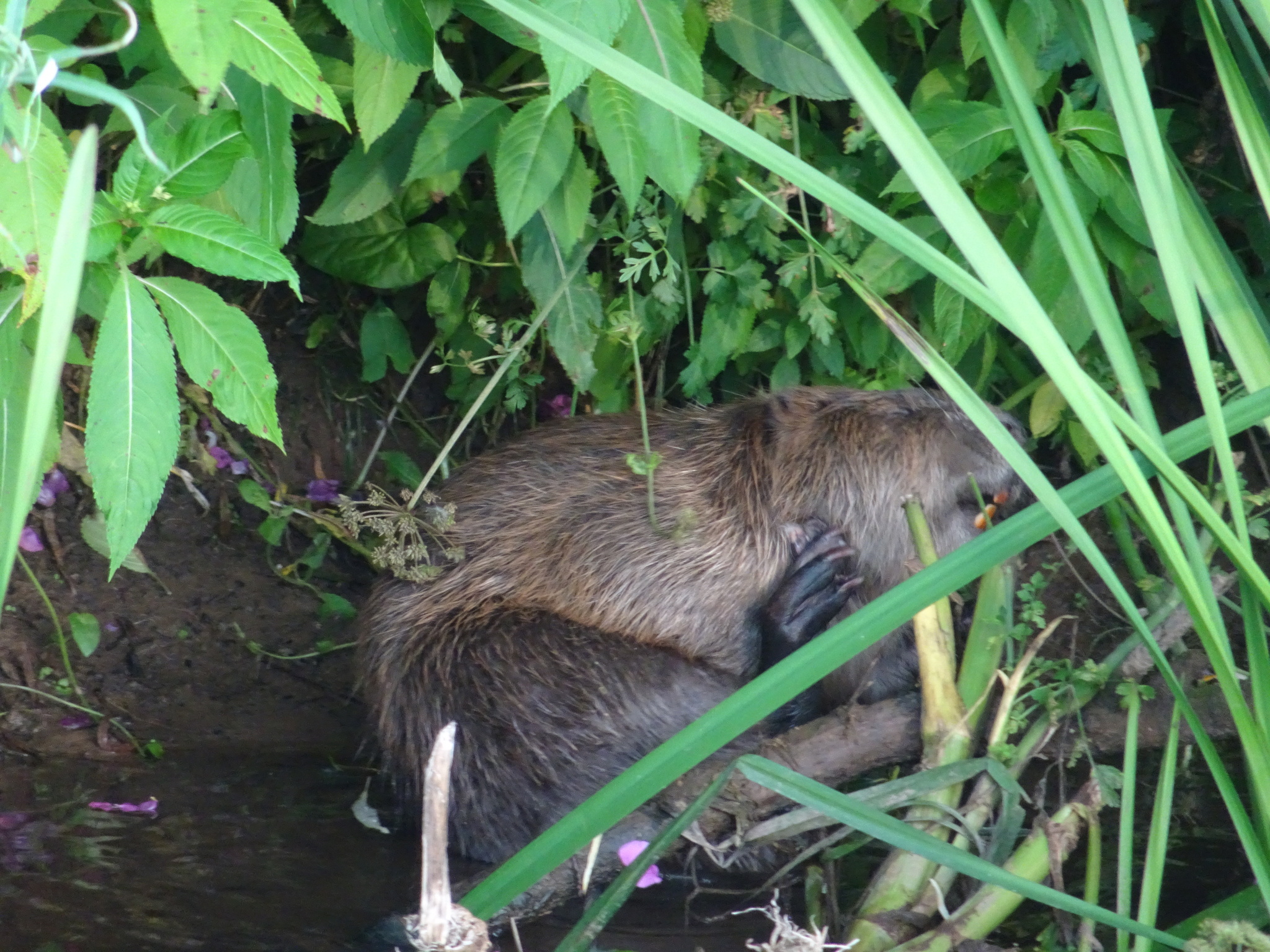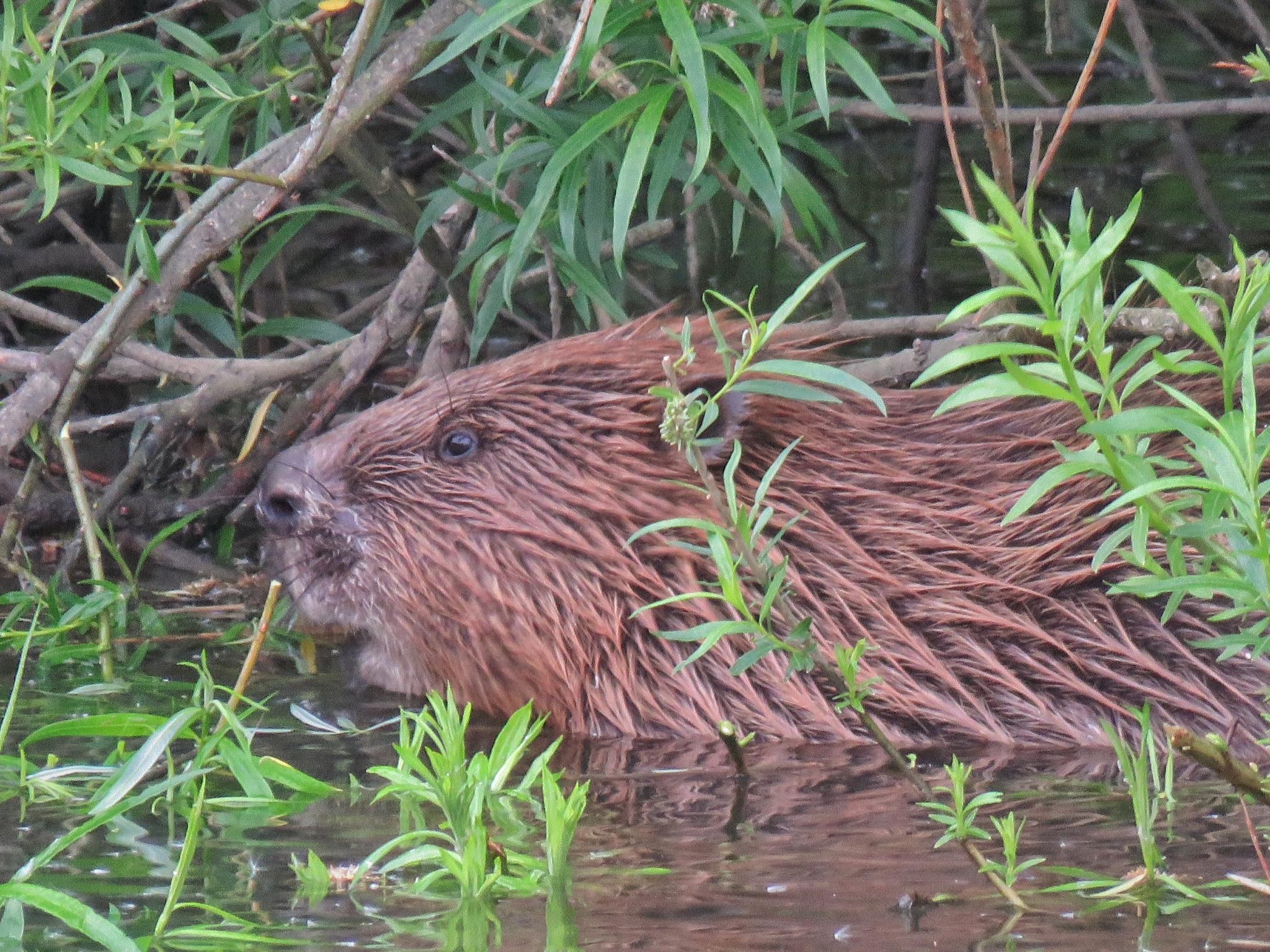Scientific name: Castor fiber
Conservation status: Globally the Eurasian Beaver is classified as “Least Concern” with population trends increasing (IUCN Red List). However, in Great Britain, the Beaver has a classification of “Endangered” and “Critically Endangered” in England (Mammal Society)
What’s the big deal with Beavers?
The Eurasian Beaver is the second largest living rodent species in the world, growing up to 30kg. These chunky creatures are not particularly fast on land, but their thick fur, webbed hind feet, and thick scaly tail help them swim at speeds up to five miles per hour. In addition, Beavers have special adaptations that make them well suited for aquatic habitats. They can hold their breath underwater for over 15 minutes and also possess an extra transparent eyelid (nictitating membrane) that enables them to see while swimming underwater. The average lifespan of a Eurasian Beaver is seven to eight years yet some have been known to live up to 25 years.
The Beavers’ superpower comes from their strong front teeth, called incisors, which they use to gnaw on the trunks of trees and cut through other vegetation. Their incisors are coated with iron, giving them a bright orange colour and adding strength to their chewing power. The constant chewing wears down their teeth but, like all rodents, the Beavers’ incisors never stop growing (The Wildlife Trusts, A-Z Animals).
Beavers, with their unique dental structure and behaviours, hold a remarkable and indispensable role within the ecosystem. Recognised as true “Ecosystem Engineers”, Beavers exert an outsized influence on their surroundings, a distinction attributed to only a handful of species (Rewilding Britain). Beavers are herbivorous (plant-eating) animals that fell trees and other vegetation and use the plant material to build their dams and lodges. Dams are pivotal in creating expanded bodies of water, serving as protective havens for Beavers. Lodges are their homes with an underwater entrance that makes it nearly impenetrable to non-Beaver guests.
While the Beavers are manipulating the vegetation to build a safe home for themselves, their actions have a lot of benefits for the rest of the ecosystem. The felled trees open up the canopy, enabling more sunlight to reach the forest floor and rejuvenating growth. The coppiced trees regrow in a more balanced manner as the Beavers prevent dominant tree and shrub species from overgrowing and overshading a site. Beavers’ dams hold water behind them, building complex wetland mosaics around them that benefit many species such as frogs, newts, fish, invertebrates, and wetland birds.
These leaky dams have further benefits such as helping fight climate change by holding carbon in the reservoirs behind them (Science), filtering pollutants from running downstream (Science Daily), and slowly releasing water to surrounding areas to alleviate drought (BBC). These benefits are most pertinent to woodland habitats where these aquatic architects are well adapted to thrive.
Conservation status and history
The Eurasian Beaver is classified as “Least Concern” globally with population trends increasing (IUCN Red List). However, in Great Britain, the Beaver has a classification of “Endangered” and even more alarmingly, “Critically Endangered” in England (Mammal Society). In October 2022, the Eurasian Beaver was legally reinstated as “native” and is now a protected species in the UK (Natural England). Encouragingly, reintroductions of Beavers have been instrumental in reversing their local extinction across the UK. Beaver populations are increasing throughout much of their historic territories.
Eurasian Beavers once lived all over Europe and Asia. The native and once common rodent was driven to extinction in the UK by pressures such as habitat destruction and intensive hunting. Being well adapted to aquatic environments, Beavers’ soft fur was prized for its warmth and water resistant properties and was the primary reason for their persecution. The disappearance of these rodents led to huge ecological changes as vegetation that was previously managed by the Beavers’ activities, now require manual maintenance.
Official and unofficial reintroductions of Beavers have brought the Eurasian Beaver back to parts of the UK including Devon, Cornwall, and areas in Scotland. Beaver reintroductions have provided positive impacts such as restoring degraded peatlands and wetlands, like populations in Kent (Kent Wildlife Trust). Other populations have been released in suboptimal habitat, including agricultural land in Scotland where they face conflict with farmers as their wetlands expand into the surrounding agricultural fields. These unfortunate Beavers face either lethal control or relocation; which is where projects such as the Ealing Beaver Project come in to provide suitable habitat where the Beavers can work in harmony with their surroundings.
This species focus was written by Nadya Mirochnitchenko: Ecologist, Ealing Wildlife Group; Beaver Coordinator, Ealing Beaver Project

